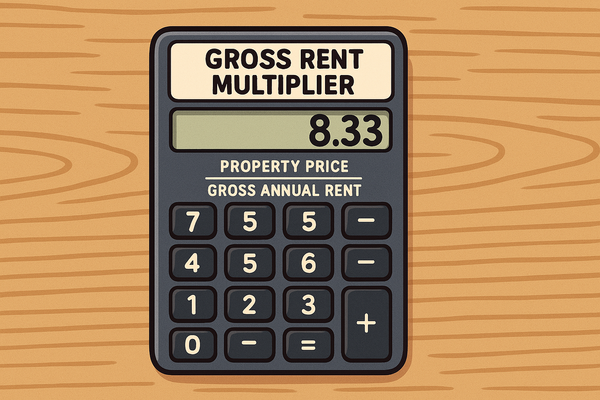Build-to-Rent: The Complete Guide for Property Managers
Discover how to effectively manage build-to-rent communities with our comprehensive guide covering operational strategies, tenant relationships, legal considerations, and proven best practices.

Did you know that 50,000 new Build-to-Rent units were completed in a single recent year? This staggering growth represents one of the most transformative trends in today's rental housing market. Unlike traditional rental properties that were originally built for sale, BTR developments are purpose-designed from the ground up exclusively for the rental market.
This specialized approach to property development is reshaping how property managers approach tenant relationships, operational efficiency, and long-term investment strategies.
For property managers and landlords, understanding the BTR model is no longer optional—it's essential. With significant growth continuing across the southern and midwestern United States, this sector represents a substantial shift in rental property operations.
Whether you're considering managing your own rental property or overseeing a portfolio of BTR communities, this guide will equip you with the knowledge and strategies needed to navigate the unique challenges and opportunities presented by BTR properties.
Definition and Background
What Exactly Is Build-to-Rent?
Build-to-Rent refers to residential properties specifically constructed for long-term rental rather than being built for sale. These developments are typically owned and managed by a single entity—often a developer, institutional investor, or dedicated property management company—and are designed with renters' needs as the primary consideration.
Unlike traditional rental properties that may have been converted from owner-occupied homes or built originally for sale, BTR developments incorporate tenant-focused amenities and features from the earliest design stages.
This tenant-first approach manifests in thoughtful layout configurations, communal spaces, and property management services that enhance the rental experience.
The BTR model encompasses various property types, including:
- Single-family rental homes in suburban communities
- Multi-unit apartment complexes in urban settings
- Townhome developments with shared amenities
- Mixed-use properties combining residential and commercial spaces
While most BTR developments offer market-rate rentals, some projects incorporate affordable housing components supported by government programs or tax incentives. The model's flexibility allows it to adapt to various regional markets, housing demands, and demographic needs.

The Evolution of BTR
The BTR housing model has gained significant momentum in recent years, but its roots extend back to the aftermath of the 2008 financial crisis. During this period, institutional investors began acquiring distressed single-family homes and converting them to rentals.
This approach evolved into purpose-built rental communities as developers recognized the long-term benefits of designing properties specifically for rental use.
The sector has seen particularly strong growth in regions experiencing population influx combined with housing affordability challenges.
Urban centers and rapidly growing suburban areas have become hotspots for BTR development, with companies like Invitation Homes and Tricon Residential emerging as prominent players in the space.
Significance in Property Management
Operational Advantages
The BTR model fundamentally transforms property management operations through consolidation and centralization. Rather than managing scattered individual properties across different locations, property managers can oversee entire communities under single ownership.
This streamlined approach offers several key benefits:
- Centralized maintenance services that can respond more efficiently to tenant needs
- Standardized property features that simplify repairs and replacements
- Consolidated tenant services that enhance the rental experience
- Unified marketing strategies that reduce vacancy periods
- Simplified accounting and financial management
Property managers overseeing BTR communities find that the consistency of newly constructed properties significantly reduces the maintenance challenges common in older rental stock.
With standardized fixtures, appliances, and systems throughout a development, maintenance teams can work more efficiently and cost-effectively.
Financial Impact
BTR properties generate substantial financial advantages for property managers and investors alike. According to recent market analysis, these properties command rental premiums of 5-15% compared to similar but older rental options in the same neighborhoods.
This premium pricing stems from several factors:
- Modern, energy-efficient designs that appeal to environmentally conscious renters
- Brand-new construction that minimizes repair needs and maintenance costs
- Purpose-built amenities that justify higher rental rates
- Professional property management that enhances tenant satisfaction
The predictable income streams from BTR communities provide property managers with greater financial stability. With lower vacancy rates—often 2-3 percentage points below market averages—these properties deliver more consistent revenue even during market fluctuations. This stability makes BTR particularly attractive to institutional investors seeking reliable returns.
BTR vs. Traditional Rental Performance Metrics
Key performance indicators showing quantifiable advantages of purpose-built rental communities
Key Insights for Property Managers
Tenant Relationship Transformation
Perhaps the most significant impact of BTR on property management lies in transformed tenant relationships. The purpose-built nature of these communities fosters longer-term tenancies and higher satisfaction rates. Property managers report average tenancy lengths of 3+ years in BTR communities compared to roughly 2 years in traditional rental properties.
This extended tenancy results from several factors:
- Communities designed specifically for family living with features like private yards and garages
- Amenities that foster community connection and belonging
- Professional management services that respond promptly to tenant needs
- Modern features that eliminate many common tenant complaints
For property managers, these extended tenancies translate to reduced turnover costs, lower vacancy rates, and more stable community environments.
The professional management approach characteristic of BTR developments helps establish clear expectations and consistent service delivery, further enhancing tenant satisfaction.
Practical Applications
Scenario 1: Converting from Traditional to BTR Management
Situation: A property management company accustomed to managing converted single-family rentals takes on its first purpose-built BTR community with 85 homes.
Application: The management team needs to shift from a reactive, property-by-property approach to a comprehensive community management strategy.
Steps Taken:
- Implemented centralized maintenance scheduling system with dedicated on-site staff
- Developed community-specific tenant communication protocols
- Created standardized home inspection procedures leveraging the uniform construction
- Established community amenity management processes
- Trained staff on BTR-specific tenant relationship management
Outcome: The property management company decreased average maintenance response times by 62% while increasing tenant satisfaction scores by 28%. Staff reported greater job satisfaction due to more efficient systems and clearer procedures.
Actionable Takeaway: When transitioning to BTR management, invest in centralized systems and community-specific training before taking on the portfolio. The uniformity of construction creates efficiency opportunities that traditional scattered-site management lacks.
Scenario 2: Managing Tenant Expectations in Premium BTR Communities
Situation: A luxury BTR development charging premium rents faces tenant dissatisfaction despite high-quality construction and amenities.
Application: The management team needs to align service delivery with the premium pricing model to maintain tenant satisfaction and justify higher rents.
Steps Taken:
- Conducted tenant experience surveys to identify specific expectations
- Implemented white-glove maintenance services with guaranteed response times
- Created a dedicated community manager position focused solely on tenant relationships
- Developed a custom mobile app for amenity booking and maintenance requests
- Established quarterly community events to foster connection among residents
Outcome: Tenant renewal rates increased from 62% to 84% within eight months, while maintenance satisfaction scores rose to 4.8/5 from a previous 3.2/5.
Actionable Takeaway: BTR communities commanding premium rents require service levels that match the pricing. The standardized construction allows for predictable maintenance, but tenant expectations for service quality increase proportionally with rent.
Scenario 3: Scaling BTR Management Across Multiple Communities
Situation: A rapidly growing property management company takes on five new BTR communities spanning three different states, more than doubling their unit count.
Application: The management team needs scalable systems that maintain quality while accommodating growth across different regulatory environments.
Steps Taken:
- Implemented enterprise property management software with BTR-specific modules
- Centralized back-office functions while maintaining on-site presence at each community
- Developed standardized training programs addressing BTR-specific management needs
- Created region-specific compliance protocols addressing varying regulatory requirements
- Established performance benchmarks specific to BTR operations
Outcome: The company successfully integrated all five communities while maintaining consistent service levels and achieving 94% occupancy within four months—12% higher than regional averages.
Actionable Takeaway: BTR management scales most effectively when standardized systems accommodate regional variations. The consistency of purpose-built communities allows for replicable management approaches that can be tailored to local regulations and market conditions.
BTR Management Decision Framework
Streamlined decision paths for optimal Build-to-Rent property management
Maintenance Request Processing
Classification & Response Protocols
Tenant Relationship Management
Individual vs. Community Approaches
Pricing Strategy Implementation
Value-Based Rate Setting
Amenity Management Optimization
Usage & Programming Decisions
Key Decision Principles
- Standardize decision protocols while maintaining flexibility for property-specific needs
- Document all decisions and outcomes to build institutional knowledge
- Balance individual tenant needs with overall community benefits
- Review and refine decision outcomes quarterly to improve future decisions
Legal and Compliance Considerations
Federal Regulatory Framework
BTR developments must navigate several federal regulations that impact property management operations. The Fair Housing Act remains the cornerstone of compliance, prohibiting discrimination based on protected characteristics.
Additionally, BTR communities often interact with specific federal programs:
- Affordable housing BTR projects may leverage Low-Income Housing Tax Credits (LIHTCs) or other federal subsidies, requiring compliance with program-specific rules
- The Department of Energy's weatherization regulations ensure that energy efficiency improvements benefit tenants without triggering undue rent increases
- Americans with Disabilities Act (ADA) requirements apply to communal spaces and amenities within BTR communities
Property managers must maintain thorough documentation of compliance efforts, particularly for BTR developments involving federal funding or tax incentives. These records become essential during audit processes or tenant disputes.
State and Local Variations
BTR management faces significant regulatory variation across different jurisdictions.
State and local regulations that particularly impact BTR operations include:
- Zoning laws determining where BTR developments can be constructed and their required characteristics
- Rent control or stabilization measures in certain jurisdictions
- Building codes specific to rental properties
- Local inspection and permitting requirements
- State-specific landlord-tenant laws governing security deposits, eviction processes, and maintenance responsibilities
Many states offer incentives for BTR developments that include affordable housing components, such as tax breaks, density bonuses, or expedited permitting. Property managers should work closely with development teams to identify and leverage these opportunities.
Notable state-specific considerations include North Carolina's restrictions on local regulation of BTR communities and Texas's detailed statutory framework governing rental property management.
Documentation Requirements
BTR management requires comprehensive documentation to ensure compliance and operational efficiency.
Essential documentation includes:
- BTR-specific lease agreements outlining tenant rights, rent terms, and maintenance responsibilities
- Property management agreements detailing the relationship between owners and management companies
- Maintenance request tracking and completion documentation
- Inspection records demonstrating ongoing compliance with building codes
- Energy efficiency certification documentation for BREEAM or similar programs
- Tenant screening procedures and records (maintaining compliance with Fair Credit Reporting Act)
- Rent increase notifications and procedures
For affordable housing BTR projects, additional documentation often includes:
- Income verification for qualified tenants
- Compliance reports for housing agencies
- Rent calculation worksheets demonstrating adherence to program requirements
Property managers should implement secure, accessible document management systems specific to the BTR portfolio's needs, ensuring that all required records remain retrievable during regulatory reviews or tenant disputes.
Best Practices
Leverage Centralized Management Systems
Modern BTR communities thrive under centralized management approaches that capitalize on the standardized nature of these properties. Implementing comprehensive property management software specific to BTR needs creates substantial operational advantages.
Implementation Steps:
- Deploy cloud-based systems accessible to both on-site and central office staff
- Integrate maintenance, leasing, and financial modules for comprehensive oversight
- Establish standardized reporting templates for consistent performance tracking
- Create automated workflows for routine processes like lease renewals
- Implement tenant portals for digital communication and service requests
Property managers report efficiency gains of 15-20% after implementing centralized systems in BTR communities. These gains stem from reduced administrative overhead, streamlined communication, and more effective resource allocation.
Develop BTR-Specific Maintenance Protocols
The uniform construction and systems throughout BTR communities enable uniquely efficient maintenance approaches unavailable in traditional scattered-site management.
Implementation Steps:
- Create detailed property inventories documenting standardized components
- Establish preventative maintenance schedules based on construction specifications
- Maintain stock of commonly needed replacement parts compatible across all units
- Implement mobile tools for maintenance staff to access repair histories and documentation
- Develop tenant communication templates for maintenance updates and scheduling
Property managers find that preventative maintenance in BTR communities costs significantly less than reactive approaches. The standardization across properties allows for bulk purchasing, efficient scheduling, and specialized training that reduces overall maintenance expenses by 22-30% compared to traditional rental portfolios.
Cultivate Community-Focused Tenant Relationships
Successful BTR management extends beyond individual lease agreements to fostering vibrant community environments that enhance tenant satisfaction and retention.
Implementation Steps:
- Establish regular community events tailored to resident demographics
- Create dedicated communication channels for community updates and feedback
- Train staff in community management approaches beyond traditional property management
- Implement recognition programs for long-term tenants
- Develop amenity programming that encourages resident interaction
BTR communities with active community management programs report renewal rates 15-20% higher than properties without such initiatives. These approaches transform traditional landlord-tenant relationships into community membership experiences that residents value and wish to maintain.
Optimize Rental Pricing Strategies
BTR communities benefit from sophisticated pricing approaches that balance competitive positioning with revenue optimization.
Implementation Steps:
- Conduct regular market analyses of comparable properties and new construction
- Implement dynamic pricing models that adjust to seasonal demand patterns
- Develop premium pricing tiers for preferred unit locations or enhanced features
- Create lease incentive programs designed to encourage longer initial lease terms
- Structure renewal offers to reward tenant longevity while maintaining market alignment
BTR communities utilizing advanced pricing strategies report revenue increases of 3-7% compared to static pricing models. The community-wide approach allows for strategic pricing across different unit types and locations while maintaining overall occupancy targets.
Implement Sustainable Management Practices
Sustainability initiatives in BTR communities deliver both operational cost savings and enhanced tenant appeal, particularly among environmentally conscious demographics.
Implementation Steps:
- Pursue formal sustainability certifications like BREEAM that verify environmental performance
- Install energy and water usage monitoring systems to identify conservation opportunities
- Develop tenant education programs promoting sustainable living practices
- Implement green cleaning and maintenance protocols throughout common areas
- Create waste reduction and recycling initiatives tailored to the community
BTR properties with sustainability certifications command rental premiums of 4-8% while simultaneously reducing operating costs through efficiency improvements. These properties also report higher tenant satisfaction scores and longer average tenancy lengths.
Related Concepts
Affordable Housing Programs
Affordable housing initiatives frequently intersect with BTR developments, creating opportunities for property managers to leverage public incentives while addressing housing accessibility needs.
Affordable housing programs typically establish income limits for qualified tenants, often targeting households earning below 80% of the Area Median Income.
Property managers overseeing mixed-income BTR communities must maintain compliance with program-specific requirements while delivering consistent service across all tenant categories.
Understanding the relationship between BTR and affordable housing helps property managers identify opportunities for development partnerships that combine market-rate returns with public benefit and available incentives.
Real Estate Investment Trusts (REITs)
REITs have emerged as significant players in the BTR space, offering property managers insights into institutional investment approaches to rental housing.
These publicly traded entities must distribute 90% of taxable income to shareholders, creating an emphasis on operational efficiency and consistent returns.
Property managers working with REIT-owned BTR communities operate within specific performance expectations and reporting requirements that differ from privately owned portfolios.
The intersection of BTR and REIT structures highlights the institutionalization of the rental housing market and the growing emphasis on professional management approaches.
Multi-Tenant Property Management Systems
BTR communities represent a specialized application of multi-tenant property management principles, borrowing approaches from both single-family and multi-family operations.
These systems emphasize tenant relationship management, maintenance efficiency, and amenity programming that enhances community appeal. Property managers transitioning to BTR from either self-managed rental properties or traditional apartment management must adapt their approaches to address the unique hybrid nature of these communities.
Understanding the distinctions between traditional multi-tenant management and BTR-specific approaches helps property managers develop appropriate systems and staff training programs.
Common Questions
How does Build-to-Rent differ from traditional rental properties?
Unlike traditional rentals that were often built for sale and later converted to rental use, BTR properties are designed exclusively for the rental market from the initial planning stages. This purpose-built approach results in several key differences:
- Layouts and features specifically designed for tenant needs rather than resale value
- Standardized construction that simplifies maintenance and property management
- Community-focused amenities that enhance the rental experience
- Single-owner communities that enable consistent management practices
Property managers find that these differences allow for more efficient operations, reduced maintenance costs, and higher tenant satisfaction compared to managing converted properties.
Does managing BTR communities require different skills than traditional property management?
Yes, BTR management requires an expanded skill set beyond traditional property management. While core competencies remain important, BTR managers must also develop:
- Community management approaches more commonly associated with HOA management
- Amenity programming capabilities that enhance resident experiences
- Understanding of institutional investor expectations and reporting requirements
- Data analysis skills for optimizing operational efficiency across standardized properties
- Tenant relationship strategies focused on long-term retention
Property management companies transitioning to BTR should invest in specialized training programs addressing these unique skill requirements.
How can property managers maximize ROI on BTR properties?
Maximizing returns on BTR investments requires balancing revenue optimization with operational efficiency:
- Implement sophisticated pricing strategies that respond to market conditions while maintaining occupancy targets
- Develop tenant retention programs that reduce turnover costs and vacancy losses
- Create value-add service offerings that generate additional revenue streams
- Leverage the scale of communities for cost-effective maintenance and service delivery
- Utilize data analytics to identify operational inefficiencies and improvement opportunities
Property managers report that tenant retention initiatives typically deliver the highest ROI, with every 5% improvement in renewal rates translating to approximately 2% increase in net operating income.
What are the most common challenges in transitioning to BTR management?
Property managers new to BTR commonly face several transition challenges:
- Adapting to the community management aspects beyond traditional landlord-tenant relationships
- Implementing systems that leverage the standardized nature of BTR properties
- Developing maintenance approaches suited to uniform, newly constructed properties
- Aligning staff skills with BTR-specific requirements
- Meeting institutional investor reporting and performance expectations
Successful transitions typically involve comprehensive training programs, phased implementation of new systems, and clear communication of changed expectations to both staff and residents.
Conclusion
The Build-to-Rent model represents a fundamental evolution in residential property management, combining the best aspects of single-family and multi-family operations into a unique approach tailored to today's rental market realities. For property managers, BTR offers unprecedented opportunities to enhance operational efficiency, improve tenant relationships, and deliver superior returns.
The standardized construction, community-focused design, and institutional investment backing characteristic of BTR developments enable professional management approaches that transform the rental experience for both operators and residents. As the sector continues its rapid growth, property managers who master BTR-specific strategies position themselves at the forefront of the industry's evolution.
Success in BTR management requires embracing both the operational advantages and unique challenges of these purpose-built communities. By implementing the best practices outlined in this guide, property managers can capitalize on the efficiencies inherent in the BTR model while delivering the community-focused rental experience today's tenants increasingly demand.
Resources for Further Learning
- National Apartment Association's BTR Resources
- Urban Land Institute's Housing Solutions Research
- Build-to-Rent: The Complete Investment Guide
- National Multifamily Housing Council's Research Portal
- Build-to-Rent Industry Overview
Take the next step in your property management journey by applying these BTR principles to your existing operations or preparing for the transition to this growing sector. The future of rental housing is purpose-built—make sure your management approach is too.





